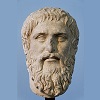12.25: The Late Medieval Papacy
- Page ID
- 12855
In 1250, the papacy looked like it was at its high point. After nearly two centuries of struggle, the popes had definitively broken the power of the Holy Roman Empire. Within less than a century, however, the power and prestige of the papacy would be heavily damaged.
The first major blow came when Pope Boniface VIII (r. 1294 – 1303) clashed with King Philip IV (r. 1285 – 1314) of France. When King Philip attempted to tax French clergy, Pope Boniface resisted strongly, claiming not only that a king had no right to tax any clergy, but also that all earthly authority was subordinate to the authority of the popes, who were rightful lords of the earth. This conflict ended when King Philip had a gang of mercenaries kidnap and abuse the pope. Even though Boniface himself escaped, he died of the shock shortly thereafter.
.png?revision=1&size=bestfit&width=673&height=496)
In order to avoid further antagonizing the French crown, the College of Cardinals (those churchmen in Rome who elect the pope) elected Clement V (r. 1305 – 1314), a Frenchman, to succeed him. Clement, however, never took up residence in Rome. In 1309, he settled the papal court in Avignon, a city owned by the papacy which sat just across the border of the Kingdom of France. To many observers at the time, it looked as though the papacy had been relocated to France under the thumb of the French monarchy.
The Italian poet Petrarch referred to the period when the papacy resided at Avignon as the Babylonian Captivity of the Church. He was referring metaphorically to the account in the Old Testament (also referred to as the Hebrew Bible) in which the people of Judaea had been held captive in the city of Babylon. Petrarch was insinuating that God’s community was now held captive in a foreign land rather than occupying Rome, the city of St. Peter and thirteen subsequent centuries of popes.
.png?revision=1&size=bestfit&width=960&height=574)
The crisis would only grow worse. In 1377, Pope Gregory XI (r. 1370 – 1378) moved the papal court back to Rome. At his death, the cardinals, pressured by an angry Roman mob, elected Urban VI, an Italian. Urban, however, soon proved to be erratic and abusive, so many cardinals fled Rome to Avignon, where they elected another pope. The result was that the Catholic Christian world now had two popes, each one claiming to be the rightful representative of Jesus Christ on earth. This period, lasting from 1378 to 1417, is known as the Great Schism; it resulted in a divided church, with different bishops following different popes. A 1409 council convened to depose both popes and appoint a single pope instead resulted in three popes, as neither Rome nor the Avignon papacy recognized this new pope.
In the end, although the conflict was resolved with the Council of Constance (1415 – 1417) deposing all three popes and selecting a new one, the prestige of the papacy had been tarnished. The popes spent much of the later fifteenth century attempting to rebuild the Church’s authority and prestige, although whether they would fully succeed remained to be seen.


